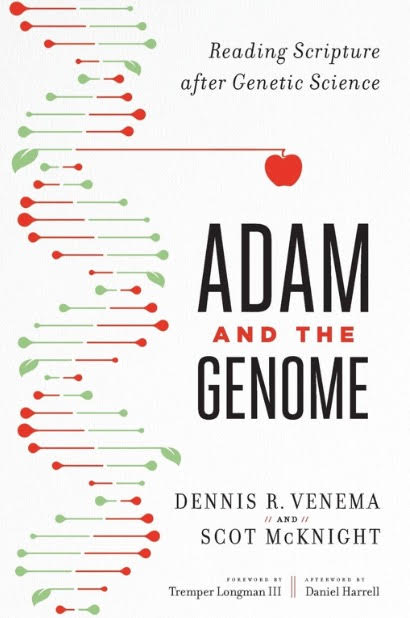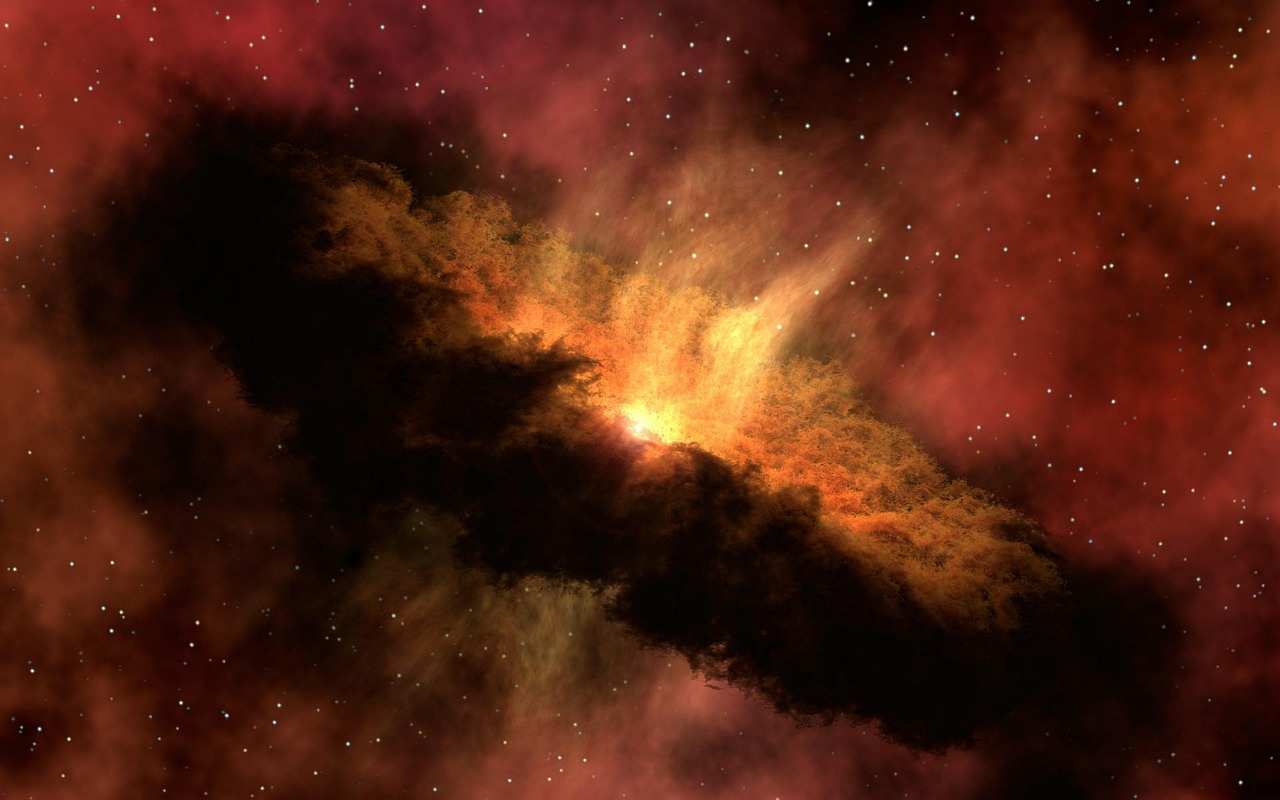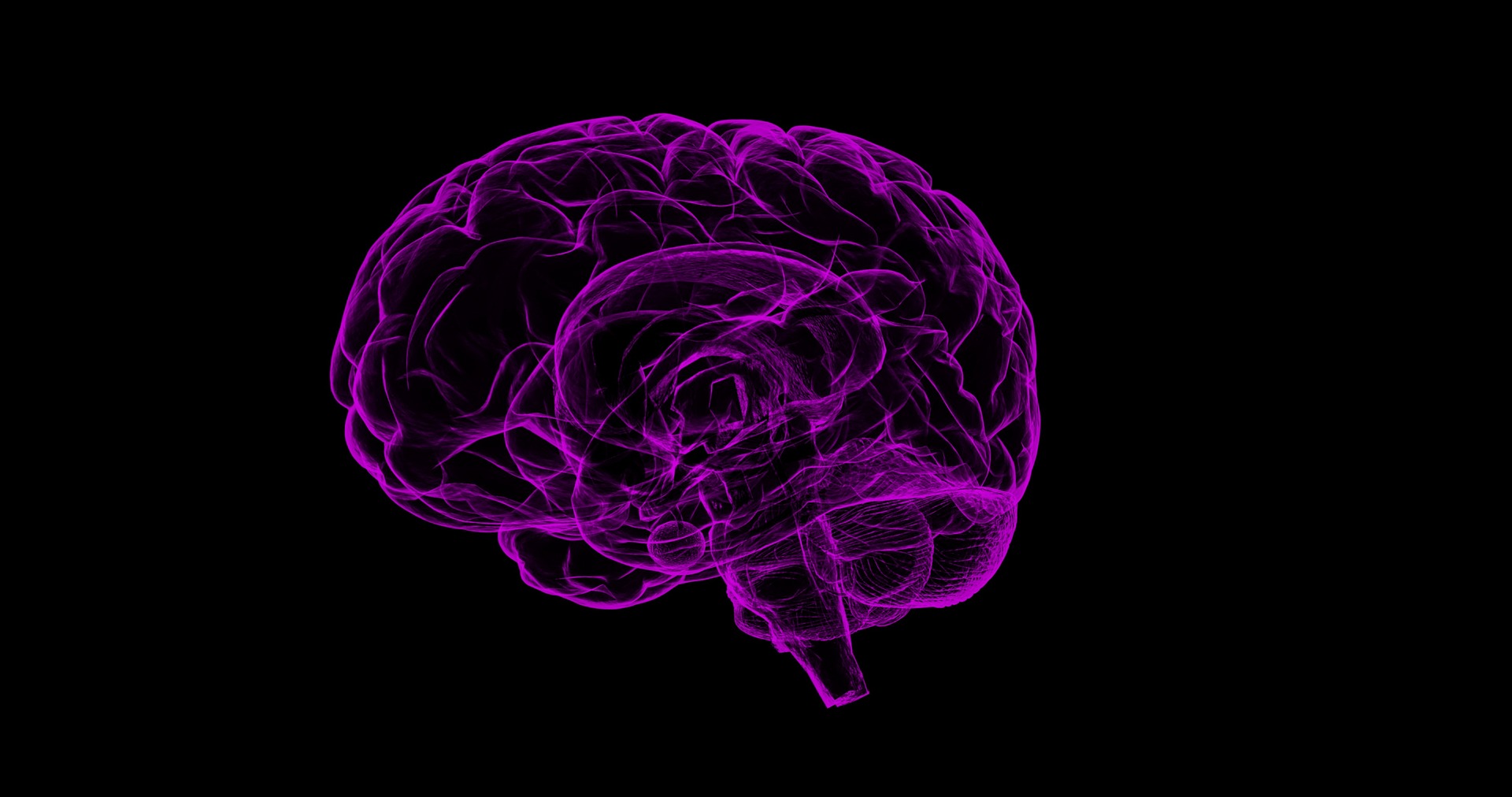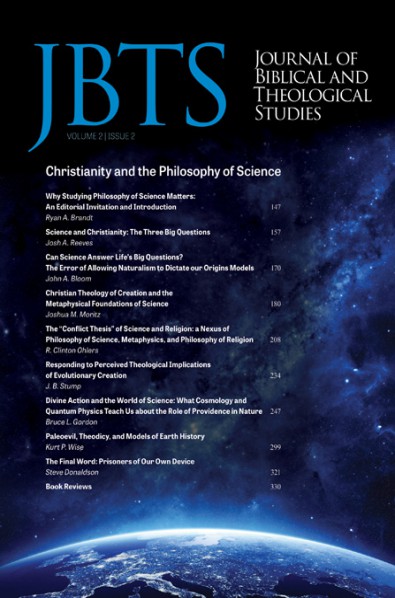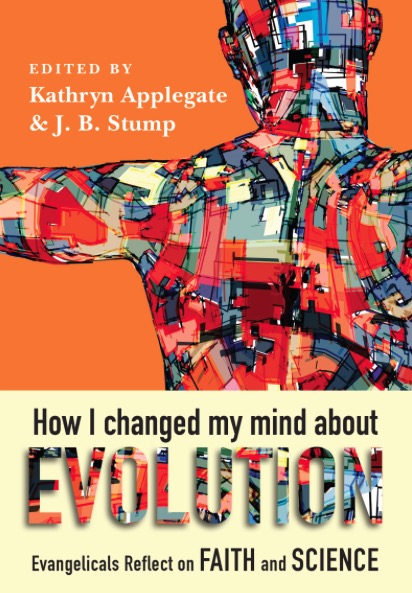


Then a miracle occurs: the blessing and limitations of science A bishop looks at science from the viewpoint of the Christian faith
Robert Forsyth, November 2006.
‘Then a miracle occurs’: the blessing and limitations of science
A bishop looks at science from the viewpoint of the Christian faith
The Right Rev. Robert Forsyth BA, BD, ThL, MTh, DipA. Bishop of South Sydney
This article was originally given on 28th October 2006 in Sydney, Australia, as the ISCAST(NSW) Annual Lecture.
Abstract
The remarkable human activity of science has been wonderfully successful in advancing human understanding of creation in which we live and human wellbeing. From a Christian point of view, science makes sense in the context of creation which is good, real and dependent. It is a blessing from the Creator. There is no essential warfare between science and Christianity.
However, the use of science as a form of Christian apologetics has dangers for Christian faith. Science has the limits in what it can describe from the actual miracles of the gospel to even the existence of science itself. The Intelligent Design issue is really an argument about what are the limits of science. Science and the Bible are engaged in a two-way conversation because God does not teach what is false, and because science helps us interpret Scripture in a number of ways: discerning literary types, distinguishing between the human and divine author’s intentions and clarifying assumptions of the models which we import to Scripture.
Key words
Science, Christianity, Bible, miracle, creation, blessing and limit of science
I am approaching the matter strictly as the title suggests. I am no scientist and I fear I will disappoint those looking for a less impressionistic and non-systematic treatment than I have tonight. However, that doesn’t mean that for a bishop in a church, science is something just for the experts, on any terms a significant movement which affects almost all of life in a very powerful way.
Not that I am uninterested in science. At high school it was my favourite subject. This was partly because I managed to top the class at Meadowbank Boys High until at least year 10 without even studying. My father, who had left school at 15 to become a fitter and turner in the New South Wales Government Railways, was nonetheless an intelligent autodidact who used to regularly get copies of the Scientific American as I remember it, and would often tell me about scientific things in the world. It was only Harry Messel’s more serious first science Higher School Certificate program that forced me finally to study the subject. I do have fond memories of sitting in the HSC exam way back in 1967 doing thePhysics level 1 paper. One question asked me to get from what were called the Lorenz Transformations to Einstein’s famous e=mc2. I remember getting there but have no idea how. That was my last serious scholarly engagement with science. My experience in that exam room reminded me of a Sidney Harris cartoon from the New Yorker magazine that no doubt you have seen.
It is a cartoon of a board filled with complicated figures and there are two learned scientists looking at it. They can see a whole row of algebra followed by the phrase, ‘Then a miracle occurs’, succeeded by further mathematical conclusions. One of the figures is saying to the other, ‘I think you should be more explicit here in step 2’.
In a way that cartoon does reflect one of the issues that still dogs us in relation to God and his miraculous powers and signs as the human discovery and research into the way God’s world works, as it were, ‘naturally’. When is it OK to add in ‘Then a miracle occurs’?
Let me start by giving a simple and, I hope, non-contentious understanding of what I take science to be. Science, or to use the phrase used until the mid-nineteenth century, natural philosophy, is a human artefact (McGrath 2001 p. 25). That is, it is a human research program and body of knowledge and all the practices that go with it. By emphasising it is an artefact, I am emphasising its humanness and that it is something we have made. The particular feature of this artefact is that it is a body of knowledge that proceeds by looking at the world around us, what we might call the ‘natural’ world, seeking to understand it by principles which are uniform across all that is, through the use of experimental method and in particular mathematical conceptualisation. By its very nature, science is provisional, despite some talk about its ‘assured results’. By its very nature, science is open to investigation, falsification and reformulating. Progress most often involves the overthrow of once seemingly secure theories, that some may even have been mistakenly taken to simply be ‘facts’.
This remarkable human activity has been in the last four hundred, and in particular two hundred years, profoundly and wonderfully successful in advancing human understanding of the creation in which we live. It has also contributed astoundingly to human wellbeing in that time. On the latter point, it is quite astounding instructive to read in William Bernstein’s The birth of plenty ( Bernstein 2004) of how revolutionary the last 200 years has been Bernstein draws attention to what is called the
2
Malthusian Trap where productivity per head remained fundamentally stable and therefore held people in a trap. He quotes Phyllis Deane:
When population rose in pre-industrial England, product per head fell, and if for some reason (a new technique of production or the discovery of a new resource, for example, or the opening of a new market) output rose, population was not slow in following and eventually levelling out the original gain in incomes per head.
(Deane cited in Bernstein 2004 p.13)
It is called the Malthusian Trap after the Rev Thomas Malthus who wrote, about the same time Australia was just being settled, his ‘Essay on the principle of population’ (Malthus1798). His analysis of the root cause of human suffering was:
…the power of population is infinitely greater than the power of the earth to produce subsistence for men
(Malthus cited in Bernstein 2004 p. 11).
However, as Bernstein points out, Malthus has been proved wrong. In fact, just about the time he was writing his book, there is strong evidence that the real capital GDP per head in western Europe rose astoundingly.
What we have come to know as the Industrial Revolution transformed the Malthusian Trap. Increases in per capita income and wellbeing have way outshot that of population growth. While, as Bernstein is keen to point out, there are crucial institutional and social factors behind this rise even in world per capita GDP in the last two hundred years, the success of science and technology is a crucial component.
To be frank, I do not know of any human endeavour which has advanced so rapidly and effectively as have science and its technological cousin in the last two centuries.
Consider the unprecedented growth in human knowledge which has occurred through the advance in science in the last few hundred years. Two particular and unique features of science stand out.
One, it is a form of knowledge which is genuinely advancing. Although the history of science is not a straight path but often a twisted one of challenges to existing models and conclusions, nonetheless, scientific knowledge does genuinely advance. This distinguishes it in many ways from other forms of human endeavour. And the speed of the growth of knowledge shows presently no sign of slowing down, which is a sign of the great power of the methods of science, of human intelligence and creativity, and the rich and wonderful complexity of the world in which we live.
This leads to the second point. The growth of scientific knowledge is also shown remarkably in the range of that which has been amenable to genuine scientific understanding, from the immensity of the universe to the smallest imaginable level of reality, from the most basic thing to the complexities of the human brain. There is no body of human knowledge which is as surely founded or as wide-ranging in its implications as the growth of scientific knowledge.
Of course, scientific growth has led to new ways of human beings doing evil to each other, and the beginning of innovation often increases human suffering in the short term. For the latter, I am thinking of conditions during the Industrial Revolution and the kind of problems created by the technological advances which we used in the First World War. The scientific enterprise shows the effects of our creatureliness and our fallen sinfulness: our creatureliness in that we are so often ignorant of the implications of what we have learned, and especially its application, and therefore do what seems good at the time but often has very bad consequences and side effects; and our sin in that science increases human power, both for good and especially also for evil.
But, notwithstanding these negatives, I think we can say that science has been a great blessing to human beings. And I think we have good reason to believe that it is going to continue to be so.
I reflect on science from a Christian point of view under four headings.
- Science from a Christian view of reality: a blessing of creation
As Alister McGrath, Professor of Historical Theology at Oxford University and also a PhD in molecular biophysics, has written,A positive working relationship between Christian theology and the natural sciences is demanded by the Christian understanding of the nature of reality itself – an understanding which is grounded in the doctrine of creation.(McGrath 2001 p. 21)
I completely agree. The Christian faith understands the reality we live in as created and upheld by the living God. This means the world around us is good, it is real and it is dependent.1- Good Christian faith understands creation as good in contrast to those worldviews that hold that matter is somehow inherently evil, that this world is suboptimal, a place to be escaped from. Even though creation is not God but has a kind of independence from him, God declared that ‘indeed it was very good’ (Gen. 1:31 NRSV).
- Real It is real in that creation is not an emanation from God and has its own reality and its own way of being and behaving. This is very significant
1 I owe this basic thought to Gilkey (1959) although I have not consulted the book for this lecture.from the point of view of science. The Christian understanding of reality is that God creates that which has its own nature and behaviour. The biblical picture and that of Christian theology reflecting upon it have emphasised that creation has its own real causes and a level of autonomy from the God who created it.
A really fine modern statement of this doctrine is to be found in the Roman Catholic Church’s National Theological Commission which was presided over by (the then) Cardinal Ratzinger only a year before his election to the papacy. The report on Human Persons Created in the Image of God speaks for more than just the Catholic tradition it invokes when it asserts that…as universal transcendent cause, God is the cause not only of existence but also of the cause of causes. God’s action does not displace or supplant the activities of creaturely cause but it enables them to act according to their natures and nonetheless to bring about the end he intends.(International Theological Commission 2002 section 68)
This is the key concept of what are called secondary causes, that there is real causation in the world which has its own reality. Nonetheless, creation continues to be dependent for its existence upon God at every point of its autonomous life.
Of particular interest to Christians is the astounding fruitfulness of the human reason and thinking, particularly in mathematics, in getting a grip on the reality of the world around us. Maybe we take for granted that mathematics would describe reality so effectively, but a moment of reflection will suggest that this is a cause of some puzzlement. McGrath points out that the ordering of created reality is a theme of major importance in the Old Testament conception of creation (McGrath 2001 p.155). By virtue of the fact that there is a Creator, there is also a creation that is ordered to its Creator and will always exist as his creation in no other way than by its position which points to God.
In the New Testament, there is a significant deepening of this understanding, caught in the opening words particularly of John 1: ‘The word became flesh’ (Jn 1:1 NRSV). The logos through whom God created the world became (and still is) incarnate in the historical figure of Jesus Christ. The witness of the New Testament is that the world was made through that word or divine Son. We are drawn to see the world having a deep order and reason behind it which is also expressed in the incarnation.
But how can the mere creaturely human mind grasp the complexity of the immense creation? The Christian also understands that the human being is made in the image of God. Although the image of God can have many references, that it involves some sense of intellectual mastery and rationality does seem to be clear. It gives a reason why the human mind, itself part of the creation, nonetheless is able powerfully to grasp the deep and complex order of the reality around it. In other words, the Christianunderstanding of reality enables us to understand how it is that science is so successful. I will return a little later to questions of whether this is also a point of the limits of the explanatory powers of science. - Dependent
And the creation is, as well as good and real, also dependent. Since it is created out of nothing by God’s own will, it does not itself contain within itself its reason for being and therefore is not in any sense necessary. The contingency of the world around us is both a puzzling and a fruitful aspect of its reality. This is one reason why the search for evidence and experience is significant for a Christian understanding of creation. Despite what we have said about the power of reason, the Christian understands that the way the world actually is will not be found simply by working, as some of the ancient Greeks believed, just by getting the right axioms and then logically deducing the way the world must be (Judge 2006 ‘Who programs values?’ and ‘Experimental Proof in Paul’). The universe being understood is not necessary, eternal and fixed, but a cosmos with a history. It is this combination of the power of reason, particularly mathematics, and the power of observation and experiment which underlie the human enterprise called science.
From a Christian point of view the marvellous success of the scientific enterprise is a blessing from the living God our creator. - Christianity from the point of view of science: the question of warfare
- No essential warfareThere is a common view that science and religion are somehow destined or essentially at warfare. I must say such a perception is not in any way diminished when we read that Bishop Boniface Adoyo of Kenya demanded that the exhibit in the National Museum of Kenya about the origin of Man be removed on the grounds that it was against Christian teaching, ‘creating a big weapon against Christians that is killing our faith’. The Bishop claimed that ‘When we go to museums, we believe we evolved from apes’ (Adoyo cited in The Nation 2006). However, despite the support such stories give to the stereotype, the relation of religion, and especially Christianity, and science is by no means one of essential warfare. I am very much persuaded by the insights of Dr Alister McGrath at this point. He notes that there is a tendency to attribute fixed and unchanging defining qualities to science and religion, and on the basis of this essentialist approach to argue that there is essentially a warfare. He draws our attention to a series of rigorous historical studies which have shown:…the diversity, occasional inconsistency and sheer complexity of the understanding of the mutual relationship of science and religion since about 1500. No single account or ‘metanarrative’ may be offered for this relationship precisely because the variety of relationships that have existed reflect prevailing social, political, economic and cultural factors.(McGrath 2001 pp. 65–66)
McGrath alerts us to the danger of using some of the polemical issues of the late nineteenth century as a model for the major relationship of science and the Christian faith. He urges us to be careful not to ignore the distinction between the political, social and relational issues that often played as much a role on occasions when there was serious conflict between the Christian faith and science as any actual real difference between ‘theology’ and ‘science’. McGrath believes that a lot of the conflict in the nineteenth century was social in origin, between the declining power of the clerical elite and the growing power of the professional guild of what are now called scientists (McGrath 2001 p. 68).
The fact of the matter is that science is in many ways subversive of any vested interests and power, overturning and challenging existing ideas. Sometimes, of course, that will involve defamation of the church but there is nothing essentially between the two which makes a conflict. - The example of the writings of Richard Dawkins.The anti-Christian and religious polemic of Richard Dawkins is an interesting example. He believes there is an essential warfare between science and religion, and that science has undoubtedly swept the field. His approach has recently come under sustained critique by Alister McGrath in his Dawkins’ God: Genes, Memes, and the Meaning of Life (2005), possibly one of the most significant little books in the area of science and religion published for some time. McGrath’s critique of Dawkins may be summed up in the following excerpt. Firstly he draws our attention to the actual neutrality of Darwinism.
Darwinism can be held to be consistent with conventional religious beliefs, agnosticism, and atheism. It all depends on how these terms are defined. The debate itself is fascinating, and opens up many important questions about the limits of the scientific method, the interpretation of the Bible, the evidential basis of faith, the transition from scientific theories to worldviews, and the history of biology. It is impossible to study, or become involved in, such debates without being challenged and stimulated to think through some of life’s great issues.But Dawkins’ case when examined rests on rhetorical not rational argument:But the debate, though immensely worthwhile and intellectually fascinating, is religiously inconclusive. Dawkins presents Darwinism as an intellectual superhighway to atheism. In reality, the intellectual trajectory mapped out by Dawkins seems to get stuck in a rut at agnosticism. And having stalled, it stays there. There is a substantial logical gap between Darwinism and atheism, which Dawkins seems to prefer to bridge by rhetoric, rather than evidence.(McGrath 2005 pp. 80-81)
I recommend you to familiarise yourself with the book to see the truth of McGrath’s quite devastating claim. - The danger of apologetics
There is, however, a cautionary tale in all this. It is clear that Christians ought to be very careful in using science in order to in any way defend or to prove their faith or the existence of God. One of the reasons why Dawkins’ approach seems so attractive is that he effectively gives an atheistic version of certain forms of Christian apologetics. The figure of William Paley in his Natural Theology; or Evidences of the Existence and Attributes of the Deity, Collected from the Appearances of Nature (Paley 1802) has probably the best known model of this. The problem is that this attempt to directly derive strong grounds for the existence of God from the existing state of science, usually by postulating a point at which ‘then a miracle occurs’, has some very significant dangers for the Christian faith. McGrath draws attention to the example of the use of Newtonian physics in the eighteenth century. What seemed to be a promising alliance between science and religion in truth led soon to a growing and potentially irreversible estrangement:An approach once advocated by the leading scientists passed into the decidedly less confident hands of bishops and archdeacons, who often repeated at second hand ideas they had not properly understood, and whose implications they were inclined to exaggerate.(McGrath 2005 p. 62)
McGrath mentions something I hadn’t realised, that John Henry Newman, the nineteenth-century leader of the Tractarian Movement who then became a Roman Catholic, had before Darwin drawn attention to the danger of the kind of apologetics that can:trap[s] Christian theology in an apologetic which can only go disastrously wrong…(McGrath 2005 p. 69).
A similar point is made in William C. Placher’s important study of the contrast between the classic Christian and more modern doctrines of God, The Domestication of Transcendence: How Modern Thinking about God Went Wrong (Placher 1996). Placher notices the increasing thinness of talk about God in the seventeenth and eighteenth centuries as science rose. Increasingly in reaction to scientific discovery and as an apologetic move Christians began to locate God as a player within the universe. (Then a miracle occurs?) This led to the loss of the deep understanding of God of traditional Christian theology. It exposed God to the vulnerable situation of being what is now called ‘the God of the gaps’. The vulnerability is shown when, as science progresses, the gaps close. A desire to make all the reasons for the belief in God publicly accessible brought about a significant and dangerous shift in European culture and laid the ground for the rise of atheism (see Buckley 1987).
In particular, Placher shows that such thinking led to the concept that an event is either from ‘natural or human will’ on one hand or from God on the other, but not both. The classical understanding was that God did not cause events in the same way that causes work within the universe butthat all events, at one level, are sustained and caused by him while at the same time each event has its own cause (Placher 1996 p. 122). Placher’s book is an effort to show that what a number of critics find most objectionable in so-called Christian theology:
…in fact came to prominence only in the seventeenth century. Some of our current protests, it turns out, should not be directed against the Christian religion but against what modernity did to it
(Placher 1996 p.2)
The Roman Catholic International Theological Commission helpfully explains a mature Christian doctrine of divine causality that includes even ‘chance’. Patcher’s treatment of Calvin, Aquinas and Luther shows that they too shared such a rich understanding of the sovereignty of God.But it is important to note that … true contingency in the created order is not incompatible with a purposeful divine providence. Divine causality and created causality radically differ in kind and not only in degree. Thus, even the outcome of a truly contingent natural process can nonetheless fall within God’s providential plan for creation.(International Theological Commission 2002 section 69)
There is no need for a ‘then a miracle occurs’ moment. - No essential warfareThere is a common view that science and religion are somehow destined or essentially at warfare. I must say such a perception is not in any way diminished when we read that Bishop Boniface Adoyo of Kenya demanded that the exhibit in the National Museum of Kenya about the origin of Man be removed on the grounds that it was against Christian teaching, ‘creating a big weapon against Christians that is killing our faith’. The Bishop claimed that ‘When we go to museums, we believe we evolved from apes’ (Adoyo cited in The Nation 2006). However, despite the support such stories give to the stereotype, the relation of religion, and especially Christianity, and science is by no means one of essential warfare. I am very much persuaded by the insights of Dr Alister McGrath at this point. He notes that there is a tendency to attribute fixed and unchanging defining qualities to science and religion, and on the basis of this essentialist approach to argue that there is essentially a warfare. He draws our attention to a series of rigorous historical studies which have shown:…the diversity, occasional inconsistency and sheer complexity of the understanding of the mutual relationship of science and religion since about 1500. No single account or ‘metanarrative’ may be offered for this relationship precisely because the variety of relationships that have existed reflect prevailing social, political, economic and cultural factors.(McGrath 2001 pp. 65–66)
- What, then, are the limits of science?The sheer success and power of the scientific enterprise over the last three hundred years are without precedent in human history, as we have seen. This raises the obvious question and temptation. Is the success of science a model for all other human knowledge? Should we not make the scientific way of knowing the only way of knowing? The very success of science tempts us to overdo it, to ignore the limits of science.
However, we need to be cautious about prematurely drawing such limits. Science’s success in explaining much of what may be thought to be beyond it should make us reluctant to draw a line before the matter has been investigated. Who can say today what it is we will know tomorrow?- The limits of human decisions and historyA limit to science close at hand is simply human action and thought. Not that there is a bit of human beings that is not open to scientific investigation. Despite continuing arguments for a non-physical mind or soul, I think we need to acknowledge the success of the cognitive sciences and neuroscience which continue to promise a great deal of extra-rich understanding of human beings as physical organisms. I do not think we have even begun to plumb some of the rich depths that will be available in the next years through the scientific study of the structures and workings of the human brain.
The point is that science is limited in explaining human decisions and history in principle. That is, human decisions and what flow from them, human actions, are not reducible to simply descriptions of the applicationof physical laws and processes despite the possibility of significant understanding of so much of human nature and behaviour. For example, in science even the meeting at which an earlier version of this paper was given cannot be explained . Science may well be able to explain a great deal of why we are who we are and how we got here, I don’t mean to a meeting, but as human beings. But the decision to call a meeting the annual general meeting of ISCAST and the nature of my address and conversation cannot simply be explained in scientific terms. Rather we explain them in terms of certain thoughts and reasons. So the first limit of science is that there are realms of explanation – we say with humans but at some point it may also apply to animals – which science cannot in principle explain. Here we need history or other such disciplines. - The limits of actual miracles like the resurrection of JesusThe Christian gospel makes claims which clearly show the limits of science. If Christ was raised from the dead, then on any terms such an event is without scientific explanation. In fact one could say that from a scientific point of view it’s a claim that the impossible has happened. Here, truly, ‘then a miracle occurs’.
We need to notice that such a claim of a resurrection from the dead is not incidental to the Christian faith but at the very heart of it. But so is the claim that the resurrection is not scientifically explicable. In fact, one way to overturn the Christian faith would be to show that the resurrection was a ‘natural’ event. NT Wright in his magisterial The Resurrection of the Son of God draws our attention to the fact that the extraordinary nature of the resurrection is indeed part of its meaning:…the fact that dead people do not ordinarily rise is itself part of early Christian belief. The early Christians insisted that what happened to Jesus was precisely something new; it was, indeed, the start of a whole new mode of existence, a new creation. The fact that Jesus’ resurrection was, and remains, without analogy, is not an objection to the early Christian claim. It is part of the claim itself.(Wright 2003 p. 712)
The same can be said of other genuine miracles. By miracle here I am talking not about events in which the remarkable timing of a natural event has significance, like possibly the wind blowing back the Red Sea in Exodus 15. I am rather talking about events which, on any knowledge of science, are frankly inexplicable and impossible, events like the multiplication of five loaves and two fishes to feed five thousand men, the instantaneous cure of diseases and so on.
Greater knowledge of science doesn’t make such events less probable because on any understanding the events are, frankly, impossible. It is true that greater knowledge of science may make us understand something of the immensity of the impossibility, if I can use that phrase. The thought of a dead body after three days coming back to life is made more and more wondrous to us now that we know more and more about the actual deep structures of human life and the nature of decay.A fatal mistake amongst Christians is to try to attempt to make the Christian faith believable or defensible within the limits imposed by science. This enterprise, which one still finds occasionally today, must by its very nature destroy the very heart of the gospel. If there is no truth other than scientific truth and if science is to define all that is real, then the Christian faith would be false.
One still finds proponents of the view that science alone is the source of our knowledge and therefore the Christian faith cannot be true. I recently debated one such man, Dr Peter Slezak of the University of Technology, Sydney. Dr Slezak rather helpfully shows that once you allow any chink in the belief that science alone explains reality, then you are permitted to have a full recourse to miracles. This occurred in his review some years ago of Paul Davies’ book The Mind of God (Davies 1996). Davies, you may remember, does not believe that miracles can occur, but is prepared to allow that somehow behind science there is a supernatural mind or transcendent cause. Slezak pounces upon the inconsistency.
But one divine intervention more or less should make no difference. The possibility of an intelligent creation is no more consistent with the principles of science than the more mundane suspensions of the laws of nature. By accepting the possibility of ‘metaphysical’ events transcending what can be known by science (p. 171), Davies has renounced the very principled intellectual grounds to which he appeals for rejecting miracles. Although Davies clearly prefers a highly attenuated notion of intelligent purpose, being just a little bit theological is like being a little bit pregnant. In the end, the difference between Professor Davies and the Jesuit priest is the difference between one big miracle and lots of little ones – a matter of minor theological disputation and who gets to wear the cassock. For a God who can make the whole universe in a ‘Big Bang’, the odd resurrection should be child’s play.(Slezak 1996 p. 207)
Indeed, though ‘child’s play’ is of course a polemical belittling of the great act of God beginning the new created order. - The limit of science itselfSurprisingly the very existence of science itself is inexplicable by science – though perhaps not so surprising, as Gödel’s Theorem reminds us no system is self-explanatory. Here I have in mind not just the human enterprise of science but the very thing that science discovers. Richard Swinburne writes:
So there is our universe. It is characterised by vast, all-pervasive temporal order, the conformity of nature to formula, recorded in scientific laws formulated by humans. It started off in such a way (or through eternity has been characterised by such features) as to lead to the evolution of animals and humans. These phenomena are clearly ‘too big’ for science. They are where science stops. They constitute the framework of science itself.Swinburne not unnaturally believes that this limit does give cause to hold the existence of God.
I have argued that it is not a rational conclusion to suppose that explanation stops where science does, and so we should look for a personal explanation of the existence, conformity to law, and evolutionary potential of the universe. … I am not postulating a “God of the Gaps” merely to explain things which science has not yet explained. I am postulating a God to explain what science explains; I do not deny that science explains, but I postulate God to explain why science explains. The very success of science in showing us how deeply orderly the natural world is provides strong grounds for believing there is a deeper cause of that order.(Swinburne 1997 p. 68)
Pope Benedict in his recent address to the University of Regensburg which caused the ‘outrage’ among some Muslims concluded his discussion of science and faith with the observation that science cannot end the question of why.
Modern scientific reason quite simply has to accept the rational structure of matter and the correspondence between our spirit and the prevailing rational structures of nature as a given, on which its methodology has to be based.Yet the question why this has to be so is a real question, and one which has to be remanded by the natural sciences to other modes and planes of thought—to philosophy and theology.(Benedict XVI 2006)
I entirely agree that, as astoundingly fruitful as the scientific enterprise continues to be, it points beyond itself. We are talking of any obvious, or even simply objective ‘evidence’ for God. But this limit to science is a ‘signal of transcendence’.2 - The Intelligent Design issue
Intelligent Design is really part of the great argument about where science ends. Science by its nature assumes natural ordering and workings. As I understand it, the Intelligent Design argument is that there are some existing processes, particularly biological ones, whose origin cannot be accounted for scientifically because of their undue complexity. The recent edition of the Briefing nicely shows the debate in such terms. The proponent William Dembski makes a big claim for the empirical verifiability of examples of Intelligent Design.
Only intelligent causes adequately explain the complex, informational- rich structures of biology, and that these causes are empirically detectable. To say that they are empirically detectable is to say that there exist well-defined methods that, based on observable features of2 To use a phase introduced by Peter Berger in A Rumour of Angels (1971).the world, can reliably distinguish intelligent causes from undirected natural causes. Many special sciences have already developed such methods for drawing this distinction- notably forensic science, cryptology, archaeology and the search for extraterrestrial intelligence. Essential to these methods is the ability to eliminate chance and necessity.(Dembski 2006 p. 14)
It is not my place here to draw attention to the problems in the analogy of the methods of recognising design in individual human artefacts compared to being able to recognise it in living beings in the natural world. Later Dembski identifies these ‘empirically detectable’ causes through finding cases of irreducible complexity, where no one part of an organism can be removed without the entire basic function failing. Here it is that we have presumably a ‘then a miracle occurs’ moment as science cannot explain the organism. But how do we know that it can’t explain this organism in question? Darrel Falk, a Christian critic of Intelligent Design, suggests that we need to be more patient rather than letting our present lack of knowledge set the standard.
Irreducible complexities are for the most part gaps in our knowledge. Obviously we don’t have the answers to all the questions. That’s what science is all about – finding things we don’t understand and then doing experiments to try to understand them. The fact is, increasingly gaps are being filled.(Falk 2006 p.18)
I find Falk’s arguments more convincing. Science has it limits. On that we are agreed, mostly. But where they are is still an open question. - The limits of human decisions and historyA limit to science close at hand is simply human action and thought. Not that there is a bit of human beings that is not open to scientific investigation. Despite continuing arguments for a non-physical mind or soul, I think we need to acknowledge the success of the cognitive sciences and neuroscience which continue to promise a great deal of extra-rich understanding of human beings as physical organisms. I do not think we have even begun to plumb some of the rich depths that will be available in the next years through the scientific study of the structures and workings of the human brain.
- Science and the Bible a two-way conversationThe Bible speaks to science about its existence as a creature and a blessing from God. But does science have anything to say back?
- The problem is not biblical miracles but the ordinary world.As miracles like the Virgin Birth are impossible to science, the question is whether or not we can accept them and other biblical miracles as a reality in a world as science understands it. This is the question of the limitation of science I have just mentioned.
The problem of science and the Bible is another question from the question of the miraculous. The problems typically arise when the Bible descriptions of the ordinary world seem to be at significant variance to that which is taught by modern science. For example, according to Psalm 93, ‘God has established the world: it can never be moved’ (Ps 93.:1 NRSV). In Revelation, the earth has four corners (Rev. 7:11) and in Job, ‘foundations’ (Job 38:4 NRSV). According to Genesis 1, there is a firmament to keep the waters above it from those below and in which are the great lights and the stars. As descriptions of the world as we now know it to be, these are simply false. Darrel R Falk sees that the short age of the earth and the quick appearance of the varied rich forms of life on it,as seem to be asserted by Scripture, can only be defended as statements of fact at a great cost. In the face of overwhelming scientific evidence for the age and size of the universe and the gradual appearance of life, the kind of moves needed for such a defence would be advocating:
…a view, that carried to its natural conclusion, leads to the position that the sciences of astronomy, astrophysics, nuclear physics, geology and biology are fundamentally wrong.(Falk 2004 p. 24)
The contrast between the surface biblical view and contemporary science is such that if, in fact, the earth was not old and life did not so gradually develop, it would be a catastrophic blow to the disciplines themselves.Quite a cost. What is the way forward? - Because we know that God does not teach what is false, science helps us to interpret Scripture.One of the key assumptions in my approach to the question is that God does not teach what is false, and therefore the Bible, as the word of God, will not teach what is false. I think we can be certain that if the most basic observation tools or the most well-supported conclusions of science say that there is no water above the sky, that the earth does move, that it is very old and that life forms appeared gradually over a great deal of time, where the Bible appears to teach otherwise or to suggest otherwise, this cannot be what God is teaching. We have to change our interpretation of what God is saying to us in Scripture.
This may sound a somewhat circular way to interpret the Bible but what other beginning point can the evangelical Christian take? It is much more certain that our interpretation of Scripture is open to question than the whole foundations of the entire discipline of modern science are faulty. So we have to struggle with reading Scripture differently than we may have first thought.
There are ways, therefore, in which science does help us to interpret what is in the Bible. In fact, this has always been so. When the Bible describes Absalom mounting on his mule (2 Sam. 18:9) we don’t have any way of knowing what a ‘mule’ is simply by reading the rest of the Bible, except that it’s something that you mount on and that it eats, but you simply have to go out and look around and find animals that are called this, in other words, by natural observation. It’s the same with all the references to place. The Bible is not a contained, enclosed universe but needs other knowledge outside of it to understand it. We therefore shouldn’t be shocked to find that science actually does help us to understand the Bible in a more substantial way than simply telling us what animals are. - Some ways that science helps us interpret the Bible
- Science helps us to discern literary types.
Science can help us identify what kind of literature we are dealing with. This is a point made with some force by Darrel Falk. His book Coming toPeace with Science (Falk 2004) is an argument that since Genesis may or may not be metaphorical and we can’t determine decisively from the text which it is, looking at the world of science can help us decide what kind of literature it is. The same may be so in other texts: because we know that the world is not based on water or foundations, for example, one might be able to say this is a metaphorical or mythical description. - God vs man’s teaching
Another way to proceed is to make a proper distinction between human and divine teaching. For example in his book Divine Discourse: Philosophical Reflections on the Claim that God Speaks, Nicholas Wolterstorff discusses the issue of whether or not the psalmist’s assertion in the opening verses of Psalm 93 that the earth cannot be moved is also an assertion that God makes (Wolterstorff 1995 pp. 209ff.). Wolterstorff makes a distinction between the main point of the passage which is attributed to God and the human author’s particular way of making or developing that point. This is a move that Christians make whether they believe that the human authors of Scripture have erred (non-inerrancy) or were preserved from erring (inerrancy). This may make people feel a little nervous, but as Wolterstorff points out, whether you hold the Bible as with or without error, people do still read back into the Bible from their knowledge outside.
Some readers will say that although the human author asserted that what we now know to be false geocentric claim, God is not making that claim. This is my own position. Others, in order to preserve the inerrancy of the human author, will assert that the psalmist was speaking metaphorically or as it merely looks, and not literally asserting the immovability of the earth. However, asks Wolterstorff, on what do they base this claim?
Well, they don’t base their conclusion on extensive research into the thought-patterns of ancient Hebrews. They haven’t discovered a pocket of avant-garde solar-centrists among the ancient Hebrews, of which the psalmist was a member, on the basis of which knowledge they conclude that he must have been speaking metaphorically when he said the earth shall never be moved […] Instead, their rejection of the literal interpretation is motivated by their conviction that if the author had been speaking literally, he would have said what is false. Since, on their view, biblical writers don’t speak falsehoods, it just follows that the literal interpretation must be discarded.(Wolterstorff 1995 pp. 228-29)
So either way scientific knowledge forces us to read the Bible differently, and more truthfully.
The one warning we need to heed is that scientific knowledge itself is provisional and incomplete, and therefore care and patience are needed in using it to assist us understand Scripture. There is nothing more pointless than defending a reading of Scripture that is built on outdated science, which some of the opposition to Galileo may well have been. - Science helps clarify old assumptions in the models we import to Scripture.
Science also helps us understand more clearly our models of God. One of the troubles with the words “Intelligent Design” is that they import the language of eighteenth- and nineteenth-century engineering into descriptions of how God made the world. It is a kind of Isambard Kingdom Brunel3 on a grand scale, drawing up plans and designing a machine, the universe. Modern science suggests that this may be an inappropriate metaphor and, in fact, when one turns to the scriptural text, one finds that it is not a metaphor used in Scripture at all. Falk, for example, explores the concept that God creates the world by giving it freedom. He appeals to the form of the commands in Genesis 1, ‘Let the waters teem…Let the land produce’ and so forth.
There is nothing to imply here that God built each individual creature in the way that a puppet builder builds his or her puppets. On the contrary, the key word of God’s construction is ‘let’.(Falk 2004 p. 150)
Falk goes on to suggest that perhaps the concept of the hovering of God’s Spirit or the light shining in darkness is a more appropriate metaphor.The analogy of the hovering Spirit and guiding light is biblical, while that of master engineer is a product of modern society and the industrial age.(Falk 2004 p. 150)
The Vatican astronomer George Coyne SJ raises a similar set of questions in a recent article in the Tablet (Coyne 2005) attacking Intelligent Design. He first notes that the old ways of putting the question as is it pure chance or design is not correct.
In the universe, as known by science, there are essentially three processes at work: chance, necessity and the fertility of the universe. The classical question as to whether the human being came about by chance, and so has no need of God, or by necessity, and so through the action of a designer God, is no longer valid. And so any attempt to answer it is doomed to failure. The fertility of the universe, now well established by science, is an essential ingredient, and the meaning of chance and necessity must be seen in light of that fertility.This fertility of the universe—‘The universe has a certain vitality of its own like a child does’—may indicate that new, but also biblical, analogous understandings of God are more truthful.
If they respect the results of modern science and, indeed, the best of modern biblical research, religious believers must move away from the notion of a dictator God or a designer God, a Newtonian God who made3 The famous engineer of Victorian timesthe universe as a watch that ticks along regularly. Perhaps God should be seen more as a parent or as one who speaks encouraging and sustaining words. Scripture is very rich in these thoughts.(Coyne 2005)
The point here is not whether Father Coyne is on the right path in particular, but rather how science interacts with our interpretation of the Bible. Essentially new science challenges old images imported from old science.4 The danger is that the present science is itself still provisional and may well itself be replaced. The Bible interpretation then will also share this provisionality. - Science helps us to discern literary types.
- How I handled Genesis 3Let me give you an example of how this works in practice. Here’s how I dealt with the historicity of the Garden of Eden story in a sermon to young adults and teenagers last year. Here is an extract of my notes.
The question is, did this happen? What is the real history here? Talking snakes. Special trees etc.Some say it is the ‘literal story’. Some say it is the ‘nonliteral story of a real (literal) fall’. I say the latter.But we can’t go behind it to know what ‘really’ happened.Like a computer with a Windows or Mac interface you move files into folders etc. But you know that reality is very different. No little folders and files are in the hard disc, numbers in registries or something. Real and it works.The Genesis story as a real and authoritative interface to the truth about humanity and human history. You can’t go behind it to know what ‘really happened’ except we know it was not literally like what is written here. But by taking this story seriously we do have direct contact with the truth of what ‘really happened’. - Unsatisfactory conclusion
(Forsyth 2005)This is not to say that all the questions are solved. Or even raised. There is a considerable amount of research yet to be done.
I regard the most significant problem in the scientific view of the origins of the world and that of Scripture is the Pauline statement that ‘as in Adam all die’ (1 Cor. 15:22 NRSV). While you can find ways to explain this, spiritual death or the like, it is plainly very difficult to understand what this means in a world in which there incontestably was death before the first man, however we consider it to be so. I have not had the time to explore all the ways in which this could be interpreted, but I just want to4 Although we may have reason to be a little cautious about how representative Fr Coyne’s view are of the Vatican as he has now been replaced as the director of the Vatican Observatory after serving in that post for 28 years.mark it as an ongoing interpretive crux.5 Patience, here, at all times is needed.
- The problem is not biblical miracles but the ordinary world.As miracles like the Virgin Birth are impossible to science, the question is whether or not we can accept them and other biblical miracles as a reality in a world as science understands it. This is the question of the limitation of science I have just mentioned.
- The blessings and limits of science
There is much more one can say about the blessings and limits of science. Of course. I am filled with confidence at the contributions which science will continue to make to human happiness and wellbeing, as well as an awareness that we humans in our creaturely sinfulness will keep misusing it to inflict great miseries on each other and ourselves.
The great danger with science, as with all God’s blessings, is that they themselves can distract you from the giver of the blessings. In a world in which human mastery over created things grows, and in which life can become safer, forgetfulness of God can become easier. This seems to be a mark of many advanced Western societies who have benefited most from the scientific revolution.
This, I think, would be the most serious danger behind it all. Just as when Israel went to the Promised Land, they were told that when things were good they would forget the God who had sent them, so the blessing of science can provide its ultimate limit.
BIBLIOGRAPHY
Adoyo, B cited in The Nation (Nairobi), 17 September 2006, viewed 18 September 2006, www.allafrica.com/publishers.html?passed_name=The%20Nation&passed_location=Na irobi –
Benedict XVI, 2006, ‘Three stages in the program of dehellenisation’, Papal address to the University of Regensburg, 12 September, viewed 21 October 2006, http://www.vatican.va/holy_father/benedict_xvi/speeches/2006/september/document s/hf_ben-xvi_spe_20060912_university-regensburg_en.html.
Berger, P 1971, A rumour of angels, Pelican, Harmondsworth. Bernstein, WJ 2004, The birth of plenty, McGraw-Hill.
Buckley, MJ 1987, At the origins of modern Atheism, Yale UP, Cambridge MA. Coyne, G, SJ, 2005, ‘God’s chance creation’, The Tablet, 6 August.
Dembski, WA 2006, ‘What is Intelligent Design?’, The Briefing, 337, pp.14-15.
Falk, DB 2004, Coming to peace with Science: bridging the worlds between faith and biology, InterVarsity Press, Downers Grove, Ill.
Falk, DB 2006, ‘Is Intelligent Design good science?’, The Briefing, 337 pp. 17-19. Forsyth, RC June 2005, Sermon at St Matthias’, Centennial Park.
5 I am not convinced, for example, by Falk’s interpretation that the text only means ‘spiritual death’ (Falk 2004 p. 200).
Gilkey, L 1959, Maker of heaven and earth, Doubleday, New York.
International Theological Commission Communion and Stewardship, 2002, Human persons created in the Image of God, viewed 21 October 2006, http://www.vatican.va/roman_curia/congregations/cfaith/cti_documents/rc_con_cfaith
_doc_20040723_communion-stewardship_en.html#_edn1#_edn1
Judge, EA, 2006 ‘Experimental proof in Paul’, in possession of the author, Sydney.
Judge, EA undated ‘Who programs values?’, in possession of the author, Sydney. Malthus, TR (published anonymously) 1798, An essay on the principle of population, J
Johnson, London.
McGrath, A 2001, Scientific Theology 1: Nature, T&T Clark, Edinburgh.
McGrath, A 2005, Dawkins’ God: genes, memes, and the meaning of Life, Blackwell, Malden MA.
Paley, W 1802, Natural Theology; or Evidences of the existence and attributes of the Deity, collected from the appearances of Nature
Placher, WC 1996, The domestication of transcendence: how modern thinking about God went wrong, Westminster John Knox, Louisville.
Slezak, P 1996, ‘Book review of Paul Davies’ “The mind of God”’, Science & Education, vol.
5, pp. 201-12.
Swinburne, R 1997, Is there a God? Oxford UP, Oxford.
Wolterstorff, N 1995, Divine discourse: philosophical reflections on the claim that God speaks, Cambridge UP, Cambridge.
Wright, NT 2003, The resurrection of the Son of God, SPCK, London.
